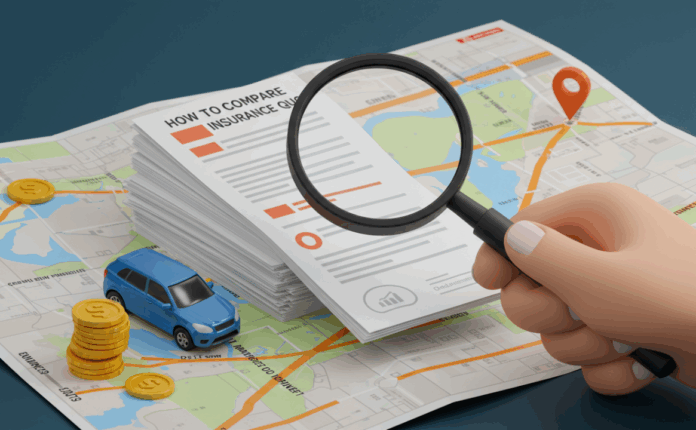Insurance is a fundamental aspect of financial planning that protects individuals, families, and businesses from unexpected financial losses. At its core, it’s a contract between you and an insurance company where you pay premiums in exchange for coverage against specific risks. Whether it’s safeguarding your health, home, or vehicle, insurance provides peace of mind by transferring the financial burden of potential disasters to the insurer. In this article, we’ll explore the basics of insurance, its various types, how it operates, tips for selecting the right policy, and strategies to maximize its benefits—all while avoiding common pitfalls.
Why Insurance Matters in Everyday Life
Insurance isn’t just a legal requirement in many cases; it’s a smart way to manage risk. Imagine a scenario where a sudden medical emergency racks up thousands in bills, or a car accident damages your vehicle beyond repair. Without insurance, these events could derail your finances. By pooling resources from many policyholders, insurers can afford to pay out claims to those who experience losses. This system not only protects you but also stabilizes economies by preventing widespread financial hardship.
Beyond protection, insurance can offer tax advantages, investment opportunities (in certain policies), and even incentives for safe behaviors, like discounts for good driving records. However, understanding the nuances is key to ensuring you’re not overpaying or underinsured.
Types of Insurance: What You Need to Know
Insurance comes in many forms, each designed to cover specific risks. Here’s a breakdown of the most common types, with insights on who might need them and why.
Health Insurance
Health insurance covers medical expenses, including doctor visits, hospital stays, surgeries, and prescriptions. It’s essential for everyone, as healthcare costs can be exorbitant. In many countries, including the U.S., it’s often provided through employers, government programs like Medicare or Medicaid, or individual plans purchased via marketplaces.
Key features to look for include coverage limits, deductibles (the amount you pay out-of-pocket before insurance kicks in), and networks of preferred providers. Actionable tip: If you’re self-employed, compare plans on government exchanges for subsidies based on income, potentially saving hundreds annually.
Auto Insurance
Required by law in most places, auto insurance protects against vehicle-related losses from accidents, theft, or natural disasters. It typically includes liability coverage (for damages you cause to others), collision (for your car’s repairs), and comprehensive (for non-collision incidents like hail damage).
For young drivers or those in high-risk areas, premiums can be steep. To lower costs, maintain a clean driving record, bundle with home insurance, or install safety devices like anti-theft systems. Pro insight: Always opt for at least the state-minimum liability, but consider higher limits if you have significant assets to protect from lawsuits.

Homeowners and Renters Insurance
Homeowners insurance safeguards your property and belongings against fire, theft, storms, and liability for injuries on your premises. Renters insurance offers similar protection for personal items in a leased space, often at a fraction of the cost.
A common misconception is that landlords cover tenants’ belongings— they don’t. Actionable advice: Inventory your possessions with photos and receipts to ensure adequate coverage. If you live in a flood-prone area, add separate flood insurance, as standard policies exclude it.
Life Insurance
Life insurance provides a payout to beneficiaries upon your death, helping cover funeral costs, debts, or lost income. Term life offers coverage for a set period (e.g., 20 years) at lower premiums, while whole life builds cash value over time, acting as an investment.
It’s particularly valuable for parents, breadwinners, or those with mortgages. Tip: Calculate your needs by multiplying your annual income by 10-15 years, plus major debts. Shop around using online quote tools for the best rates, and consider laddering policies (multiple terms expiring at different times) for flexibility.
Other Specialized Types
- Disability Insurance: Replaces income if illness or injury prevents work. Short-term covers a few months; long-term extends years.
- Travel Insurance: Protects against trip cancellations, medical emergencies abroad, or lost luggage.
- Business Insurance: For entrepreneurs, this includes liability, property, and workers’ compensation to shield against lawsuits or operational disruptions.
How Insurance Works: From Premiums to Claims
Insurance operates on the principle of risk assessment. Insurers evaluate factors like age, location, health, and history to determine your premium—the regular payment you make.
The Policy Lifecycle
- Application and Underwriting: You provide details; the insurer assesses risk and quotes a premium.
- Policy Issuance: Once accepted, you receive a contract outlining coverage, exclusions, and terms.
- Premium Payments: Monthly, quarterly, or annually—missing them can lead to lapses.
- Claims Process: If a covered event occurs, file a claim with evidence (e.g., police reports, medical bills). The insurer investigates and pays out, minus deductibles.
Insights: Always read the fine print for exclusions, like pre-existing conditions in health policies or wear-and-tear in auto coverage. To speed up claims, keep digital records and notify your insurer promptly.
Factors Influencing Premiums
Premiums vary based on risk profiles. For instance, smokers pay more for life insurance, while safe neighborhoods lower home premiums. Actionable strategy: Improve your credit score, as it’s often used in rate calculations, and ask about discounts for bundling multiple policies.
Choosing the Right Insurance: Practical Tips
Selecting insurance isn’t one-size-fits-all. Start by assessing your needs: What assets do you have? What risks are you exposed to? Use online calculators to estimate coverage amounts.
Steps to Get Started
- Research Providers: Compare quotes from at least three companies using aggregator sites.
- Understand Coverage Levels: Avoid underinsuring to save money—it could cost more in the long run.
- Consult Professionals: Independent agents can shop multiple insurers; financial advisors help with life or disability plans.
- Review Annually: Life changes like marriage or buying a home warrant policy updates.
Pro tip: Look for insurers with high customer satisfaction ratings and strong financial stability (check ratings from agencies like A.M. Best). Don’t forget umbrella policies for extra liability protection beyond standard limits.
Common Mistakes to Avoid in Insurance
Many people err by treating insurance as a set-it-and-forget-it expense. Here are pitfalls and how to dodge them:
- Overlooking Deductibles: High deductibles lower premiums but increase out-of-pocket costs—balance based on your savings.
- Not Shopping Around: Loyalty doesn’t always pay; switching providers can save 20-30%.
- Ignoring Riders and Add-Ons: These customize policies, like adding earthquake coverage in seismic areas.
- Failing to Update Policies: Notify insurers of changes to avoid claim denials.
- Buying Based on Price Alone: Cheaper isn’t better if coverage is inadequate.
By staying informed, you can turn insurance from a grudge purchase into a strategic tool.
FAQ
What is the difference between term and whole life insurance?
Term life provides coverage for a specific period at lower costs, ideal for temporary needs like raising children. Whole life offers lifelong protection with a cash value component that grows over time, but premiums are higher.
How can I lower my auto insurance premiums?
Maintain a good driving record, take defensive driving courses, increase deductibles if you can afford it, and bundle with other policies. Installing telematics devices that track safe driving can also earn discounts.
Do I need renters insurance if my landlord has coverage?
Yes, your landlord’s policy covers the building, not your personal belongings or liability. Renters insurance is affordable (often under $20/month) and protects against theft, fire, or guest injuries.
What happens if I miss a premium payment?
Most policies have a grace period (e.g., 30 days), but continued non-payment leads to lapse. Reinstatement might require back payments and proof of insurability.
Is health insurance mandatory?
In some countries like the U.S., there are penalties for going uninsured under certain laws, but exemptions apply. It’s wise to have it regardless to avoid massive medical debts.
How do I file an insurance claim effectively?
Gather evidence immediately (photos, witnesses), report promptly, and keep detailed records. Cooperate with the adjuster and appeal denials if you believe they’re unjustified.
This guide equips you with the knowledge to make informed decisions, ensuring insurance works for you rather than against your wallet. If your situation is complex, consult a licensed professional for personalized advice.



